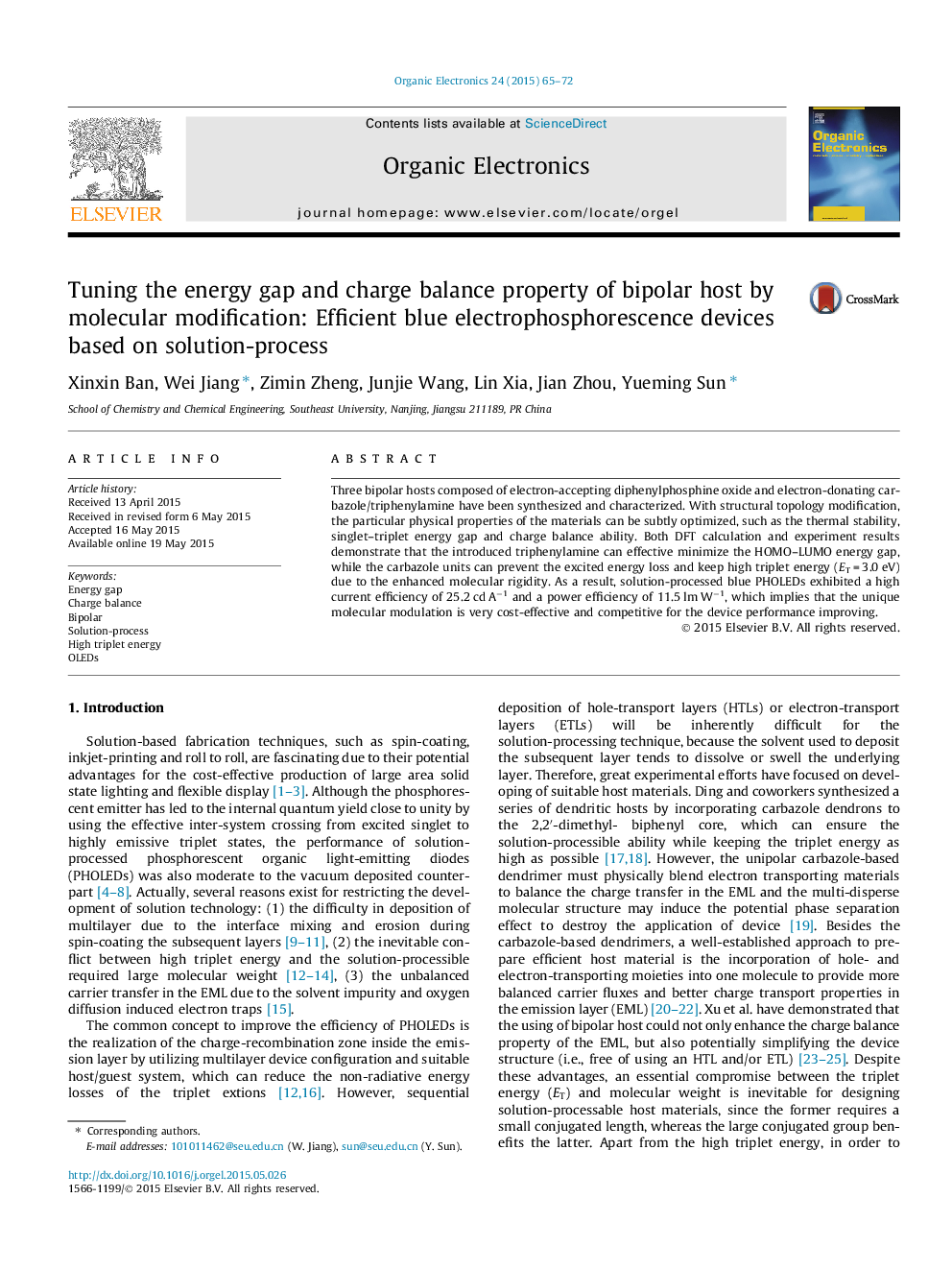| کد مقاله | کد نشریه | سال انتشار | مقاله انگلیسی | نسخه تمام متن |
|---|---|---|---|---|
| 1263677 | 1496833 | 2015 | 8 صفحه PDF | دانلود رایگان |
• The unique molecular configuration enables the soluble bipolar host high triplet energy (3.0 eV).
• The HOMO–LUMO energy gaps gradually decrease with the molecular structure modification.
• Once the carrier was well injected, the charge balance property may become important for the device performance.
Three bipolar hosts composed of electron-accepting diphenylphosphine oxide and electron-donating carbazole/triphenylamine have been synthesized and characterized. With structural topology modification, the particular physical properties of the materials can be subtly optimized, such as the thermal stability, singlet–triplet energy gap and charge balance ability. Both DFT calculation and experiment results demonstrate that the introduced triphenylamine can effective minimize the HOMO–LUMO energy gap, while the carbazole units can prevent the excited energy loss and keep high triplet energy (ET = 3.0 eV) due to the enhanced molecular rigidity. As a result, solution-processed blue PHOLEDs exhibited a high current efficiency of 25.2 cd A−1 and a power efficiency of 11.5 lm W−1, which implies that the unique molecular modulation is very cost-effective and competitive for the device performance improving.
The slight move in one part of the molecule can finely affect the optoelectronic property as a whole, and consequently modulating the thermal stability, singlet–triplet energy difference and charge balance ability.Figure optionsDownload as PowerPoint slide
Journal: Organic Electronics - Volume 24, September 2015, Pages 65–72
